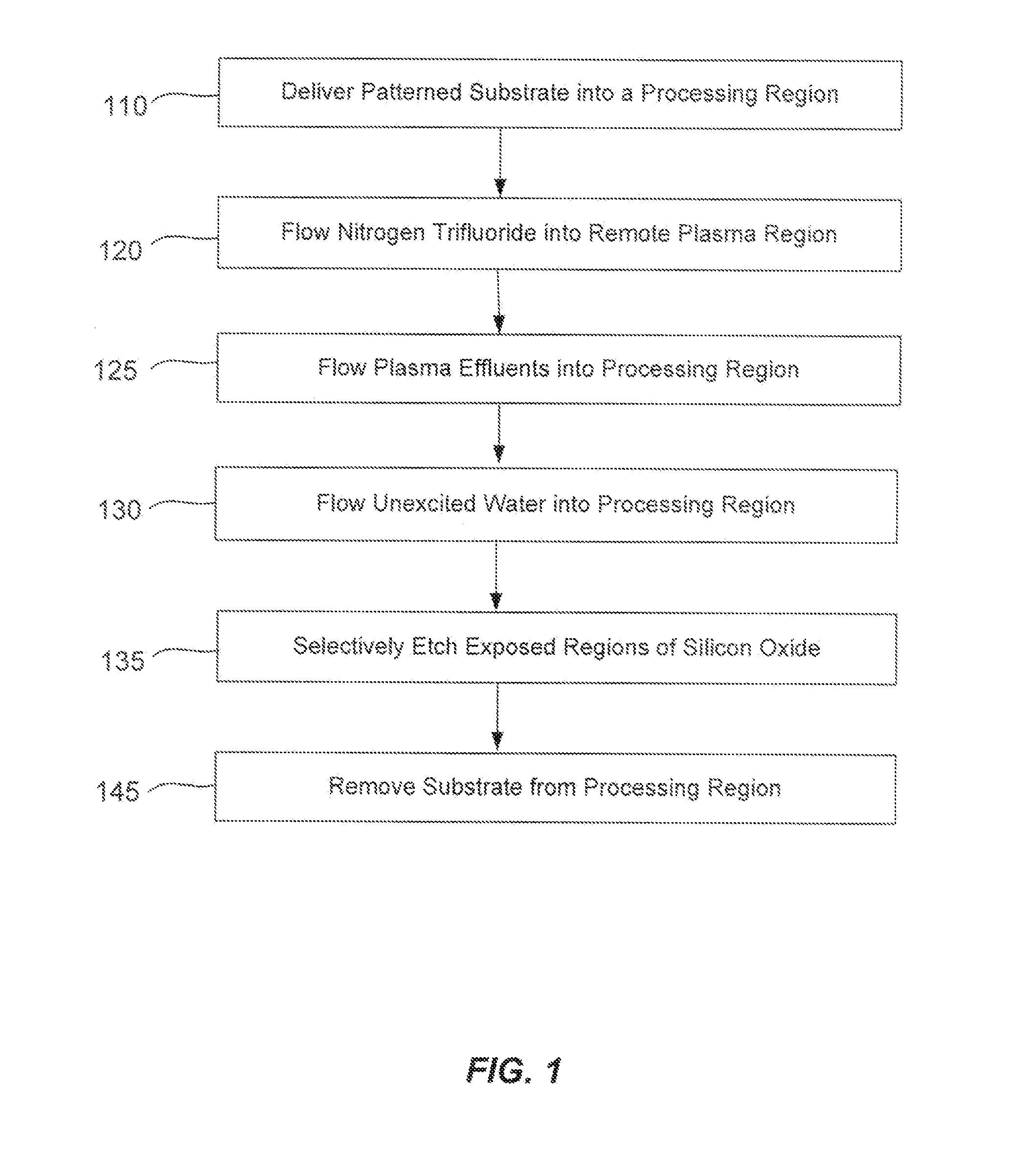Remotely-excited fluorine and water vapor etch
a technology which is applied in the field of remote excitation of fluorine and water vapor etch, can solve the problems of local plasma damage to the substrate, wet processes are unable to penetrate some constrained trenches, and deform the remaining material, etc., and achieves the effect of little deformation
- Summary
- Abstract
- Description
- Claims
- Application Information
AI Technical Summary
Benefits of technology
Problems solved by technology
Method used
Image
Examples
Embodiment Construction
[0017]A method of etching exposed silicon oxide on patterned heterogeneous structures is described and includes a remote plasma etch formed from a fluorine-containing precursor. Plasma effluents from the remote plasma are flowed into a substrate processing region where the plasma effluents combine with water vapor. The chemical reaction resulting from the combination produces reactants which etch the patterned heterogeneous structures to produce, in embodiments, a thin residual structure exhibiting little deformation. The methods may be used to conformally trim silicon oxide while removing little or no silicon, polysilicon, silicon nitride, titanium or titanium nitride. In an exemplary embodiment, the etch processes described herein have been found to remove mold oxide around a thin cylindrical conducting structure without causing the cylindrical structure to significantly deform.
[0018]Selective remote gas phase etch processes have used a hydrogen source of ammonia (NH3) and a fluor...
PUM
| Property | Measurement | Unit |
|---|---|---|
| diameter | aaaaa | aaaaa |
| diameter | aaaaa | aaaaa |
| diameter | aaaaa | aaaaa |
Abstract
Description
Claims
Application Information
 Login to View More
Login to View More - R&D
- Intellectual Property
- Life Sciences
- Materials
- Tech Scout
- Unparalleled Data Quality
- Higher Quality Content
- 60% Fewer Hallucinations
Browse by: Latest US Patents, China's latest patents, Technical Efficacy Thesaurus, Application Domain, Technology Topic, Popular Technical Reports.
© 2025 PatSnap. All rights reserved.Legal|Privacy policy|Modern Slavery Act Transparency Statement|Sitemap|About US| Contact US: help@patsnap.com



